Even though anatomy is so crucial an element to get a firm grasp on in those initial college years, it is surprising to learn that both professors and students are faced with significant challenges.
The Teacher’s Perspective:
In teaching anatomy, Anatomists are presented with the challenge of delivering required levels of core anatomical knowledge in a reduced time frame and often with fewer resources (Collins, 2009; Kaimkhani, et al., 2010).
Typically, anatomy is taught in the early years of an undergraduate or postgraduate medical programme through lectures, cadaver dissections, and more recently using computer-generated models. This teaching of anatomy is continually being redefined and methods being used to deliver this teaching are also evolving, including an increased use of visualizations through medical imaging and computer-based resources (Tam, et al., 2010).
Professional colleges, such as those responsible for surgical education and training are similarly moving to a core and specialty-specific anatomy syllabus for surgical trainees. For other practitioners, anatomy is taught at various stages within the curriculum, and is frequently seen in continuing professional development programs within specializations or refresher courses.
The Student’s Perspective
In a college or university setting, when learning anatomy, students usually have difficulty trying to visualize different aspects of the human body, which inherently are too complex or abstract to fully understand without the aid of useful visual explanations or visualizations.
As an example, when studying the origins, insertions, actions and innervation of skeletal muscles, students need to visualize how all components of the human musculature are interconnected. Such visualization cannot be achieved in a textbook and a traditional lecturing environment alone. Learning about the human body takes time and may involve the use of graphical cards, practical lessons using cadaver dissection, and interactive three-dimensional (3D) computer generated images. Many medical professionals believe that such computer models can significantly enhance education in medicine by supplementing current teaching methods (Marks, 2000).
Deep Learning
Deep learning involves understanding information in order to explain and make connections, and is a more useful long-term practice, essential for gaining competency in understanding human anatomy over a professional’s career. In contrast, surface learning is the tacit acceptance of information and memorization as isolated and unlinked facts (Ramsden, 2003). It leads to superficial retention of material for examinations and does not promote understanding or long-term retention of knowledge and information.
Current Approach Inadequate
Several researchers have noted that the assimilation and recall of human anatomy by clinicians post-graduation is sadly lacking. In one study, Waterston and Stewart (2005) received answers from 162 senior clinicians in hospitals affiliated with the University of Aberdeen in Scotland. The majority of clinicians mentioned that the current anatomical education of medical students is inadequate.
According to another survey (Cottam, 1999) 57% of the responding U.S. medical residency program directors report that their residents need a refresher course in anatomy, and 14% conclude that their residents are seriously deficient in anatomy.
The Educator’s Challenge
The situation is similar in other parts of the world according to additional research cited by Marks (2000).Therefore, the anatomy educator’s challenge is to stimulate interest and curiosity for students to invest effort to master this subject, rather than unpleasant effort and drudgery.
Towards this end, the introduction of novel resources to assist with the visualization of the structure and function of the living body is a powerful motivator.
3D Assisting Visual / Spatial Skills
Spatial ability refers to a student’s aptitude for understanding three-dimensional (3D) structure and positions of objects when they are manipulated.
These visual or spatial skills are highly important for learning anatomy (Garg, Norman, & Sperotable, 2001; Hoyek, et al., 2009), and a successful outcome requires a balance between memorization, understanding and visualization.
Studies, such as Luursema, Verwey, Kommers, Geelkerken & Vos (2006) have observed the impact of interactive in an anatomical three-dimensional (3D) reconstruction on learning outcomes. Marks (2000) has noted the increase in the use of three-dimensional (3D) technology in radiology and surgery, and argues that students should be educated and develop competency in interpreting these visualizations in their undergraduate training.
In addition to 3D assisting visual or spatial skills, time-on-task has long been an important indicator of student learning and achievement (Worthen, Dusen, & Sailor, 1994). Having access to relevant learning materials on a laptop, desktop and mobile device to practice and learn at your own pace, and in your own time is a valuable compliment to attending lectures, and lab tutorials. It makes sense – the more time you have to self-study, the better you will be at understanding human anatomy.
Not only does it makes sense that multiple access points across all internet-enabled devices would increase time-on-task through bite size formal and informal learning encounters, it is the way the world has been moving for the last two decades.
The smartphone has now become a ubiquitous and omnipresent technology in people’s lives. So much so nowadays, it has become an exception to learn of a person who does not own such a mobile device. According to Educause* report “Mobile technology is ubiquitous in the lives of today’s college students. Although 83% of adults between the ages of 18 and 29 own a smartphone, mobile device ownership among college students is even higher, (with) over 86% of undergraduates own a smartphone, and nearly half (47%) own a tablet.”
* Extract from a 2015 Educause Report: ‘Students’ Mobile Learning Practices in Higher Education: A Multi-Year Study’
Now medical and healthcare students are using their laptops, phones and tablets as a portable medical dictionary, disease image library, drug interaction checker, code finder, and more.
References:
Collins, J. P. (2009). Are the changes in anatomy teaching compromising patient care? The Clinical Teacher, 6(1), 18-21.
Cottam, W. W. (1999). Adequacy of medical school gross anatomy education as perceived by certain postgraduate residency programs and anatomy course directors. Clin Anat, 12(1), 55-65.
Educause: Students’ Mobile Learning Practices in Higher Education: A Multi-Year Study by Baiyun Chen,Ryan Seilhamer,Luke Bennett and Sue Bauer, June 22, 2015 http://er.educause.edu/articles/2015/6/students-mobile-learning-practices-in-higher-education-a-multiyear-study
Garg, A., Norman, G., & Sperotable, L. (2001). How medical students learn spatial anatomy. The Lancet, 357(9253), 363-364.
Hoyek, N., Collet, C., Rastello, O., Fargier, P., Thiriet, P., & Guillot, A. (2009). Enhancement of Mental Rotation Abilities and Its Effect on Anatomy Learning. Teaching and Learning in Medicine, 21(3), 201-206.
Kaimkhani, Z. A., Masood Ahmed, Musaed Al Fayez, Khalid Khushal, Muhammad Zafar, & 5, A. J. (2010). Does the existing traditional undergraduate Anatomy curriculum satisfy the senior medical students? South East Asian Journal of Medical Education, 3(2), 20-26.
Luursema, J.-M., Verwey, W. B., Kommers, P. A. M., Geelkerken, R. H., & Vos, H. J. (2006). Optimizing conditions for computer-assisted anatomical learning. Interacting with Computers, 18, 1123-1138.
Marks, S. (2000). The role of three-dimensional information in health care and medical education: The implications for anatomy and dissection. Clin Anat, 13, 448-452.
McLachlan, J., Bligh, J., Bradley, P, & Searle, J. (2004). Teaching anatomy without cadavers. Med Educ, 38, 418-424.
Pabst, R., & Rothkotter, H. J. (1997). Retrospective evaluation of undergraduate medical education by doctors at the end of their residency time in hospitals: consequences for the anatomical curriculum. Anat Rec, 249(4), 431-434.
Ramsden, P. (2003). Learning to Teach in Higher Education. London: Routledge Falmer.
Tam, M. D. B. S., Hart, A. R., Williams, S. M., Holland, R., Heylings, D., & Leinster, S. (2010). Evaluation of a computer program (‘disect’) to consolidate anatomy knowledge: A randomised-controlled trial. . Medical Teacher, 32(3), 138-142.
Waterston, S. W., & Stewart, I. J. (2005). Survey of clinicians’ attitudes to the anatomical teaching and knowledge of medical students. Clinical Anatomy, 18(5), 380-384.
Worthen, B. R., Dusen, L. M. V., & Sailor, P. J. (1994). A comparative study of the impact of integrated learning systems on students’ time-on-task. International Journal of Educational Research, 21(1), 25-37.

